Email Preference Center: Let subscribers control their experience
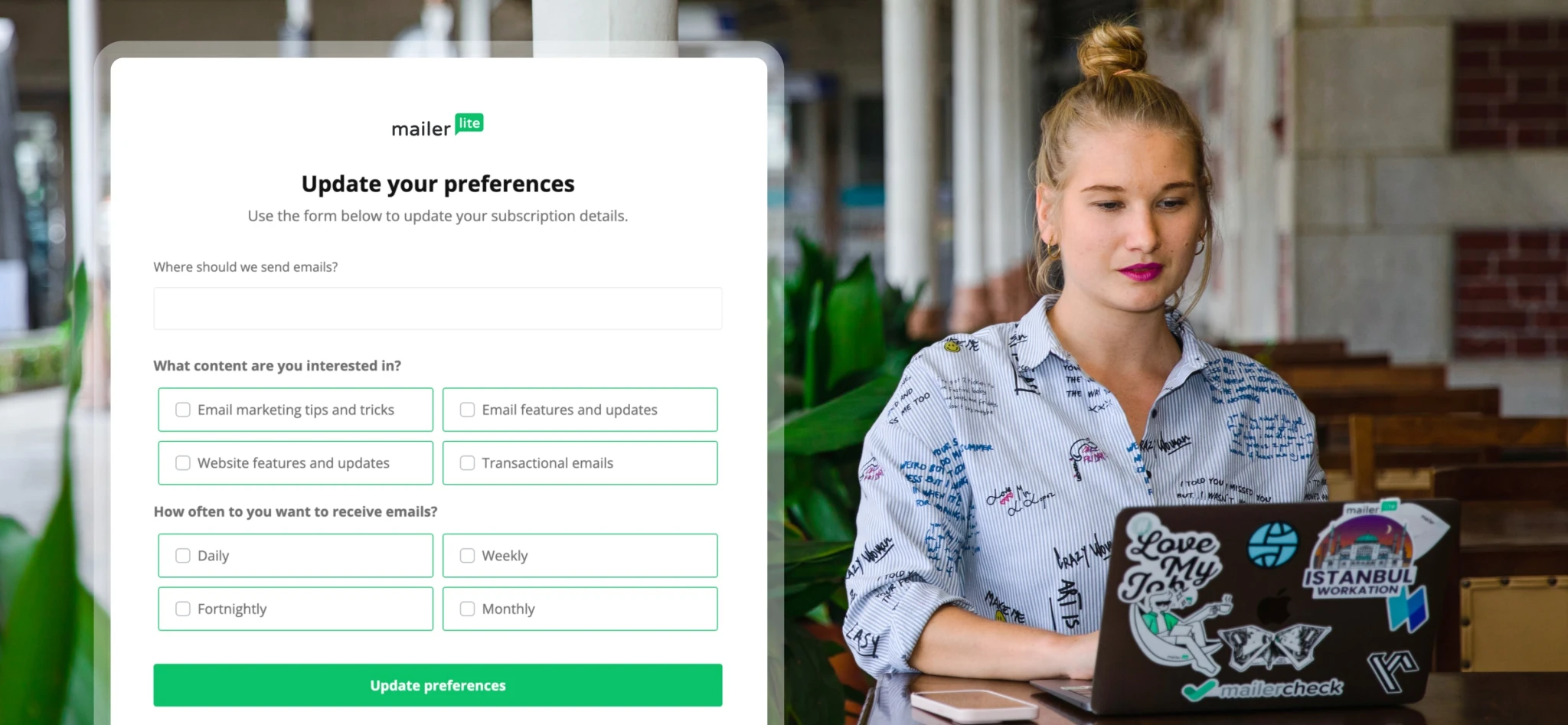 Sabina, Senior Support Manager
Sabina, Senior Support Manager
“Shaken, not stirred.” Imagine if James Bond walked into a bar, uttered his famous phrase and the bartender handed him a stirred martini.
Luckily for you, your subscribers don’t have a license to kill, but they do have preferences when it comes to email. Understanding your subscribers’ tastes is a crucial part of tailoring a personalized customer experience that leads to long-term relationships and fewer unsubscribes. That’s where email preference centers come in.
Email preference centers allow the subscriber to customize their subscription. It takes the guesswork out for you, and subscribers can ensure they only receive the emails they want. Win-win, right?
In this article, we’ll show you what goes into a successful email preference center, how to use them, and how to build them in our shiny new editor!
What is an email preference center?
An email preference center is a landing page where subscribers can choose how they receive communications from you. For example, if a subscriber feels like they are receiving too many emails from you, they can open the preference center page and opt to receive emails less frequently.
Email preference centers are most commonly found linked in the footer of marketing emails. Either by clicking “unsubscribe” or “manage preference”. They include options such as content topics, and email frequency as well as a place for subscribers to update their email addresses or unsubscribe completely.
By creating your email preference center, you empower subscribers to personalize their relationship with your brand.
Why you should use a preference center
Put yourself in the shoes of a subscriber. If something irks you about a newsletter, like receiving emails about a topic that doesn’t interest you, the knee-jerk reaction is to unsubscribe. But if you’re offered the option to choose the topics yourself you’re more likely to stay, right?
So an obvious reason to use an email preference center is to reduce your unsubscribe rate by allowing subscribers to update their preferences.
Understanding why your subscribers leave is key in working out how to use your preference center to boost retention. Some common reasons people unsubscribe from email marketing campaigns are:
Subscribers receive too many emails
The email content is not relevant to the subscriber
Emails are too promotional or “always trying to sell me something”
The email content is no longer valuable to the subscriber
Once you know why your subscribers are leaving, you have the insight you need to build a preference center that will retain the subscribers who are still interested.
An improved unsubscribe rate is just one benefit of an email preference center. You can also gain invaluable insight into the effectiveness of your email marketing strategy, improve your email metrics and build better relationships with your subscribers. Let’s take a closer look.
Gather insight into your email marketing strategy
There’s no one-size-fits-all approach to email marketing.
When you’re developing your email marketing strategy, you research what your subscribers want and need. You experiment with how often you should send emails, what type of content you should send, what time of day you send newsletters, etc.
At the end of the day, all the research and experimenting can only get you so far. But when you empower your subscribers to self-select what they want and when they want it, you no longer have to guess. Your subscribers directly influence your email marketing strategy with insights that are straight from them.
Improve email metrics
Email preference centers provide the data you need to create a personalized email experience. Which as it turns out, your email subscribers really want. Don’t believe me? Here are some stats to back it up:
72% of consumers claim they will only engage with personalized messaging
50% of Millennials and Gen Z ignore communications from companies that don’t personalize their content
Personalized emails have a 12% higher click rate than non-personalized emails
In an age where digital privacy is at the forefront of people's minds, and more users are asking apps to block tracking pixels, letting your subscribers tell you how they want to interact will guarantee more engagement and lead to more sales.
Build better relationships
At its core, a good preference center is a way for subscribers to personalize their email subscription. In fact, 60% of subscribers prefer to tell companies exactly the kind of content they want to receive when they sign up.
By implementing an email preference center into your onboarding process, you can personalize the subscriber experience from the get-go. Not only will your subscribers love you, but they’ll also engage more with your content.
Which preferences should you offer
In the MailerLite email preference editor, you can include up to ten fields and ten questions.
Fields allow subscribers to update the information in their subscriber profile. Such as email address, name, phone number, etc. The question templates allow you to ask subscribers questions to gain insight into how they want to receive your email campaigns.
Now, if you were to include twenty preference settings, that would make for a very long form that may push subscribers away. But it gives you the flexibility to customize your preference center to suit your needs.
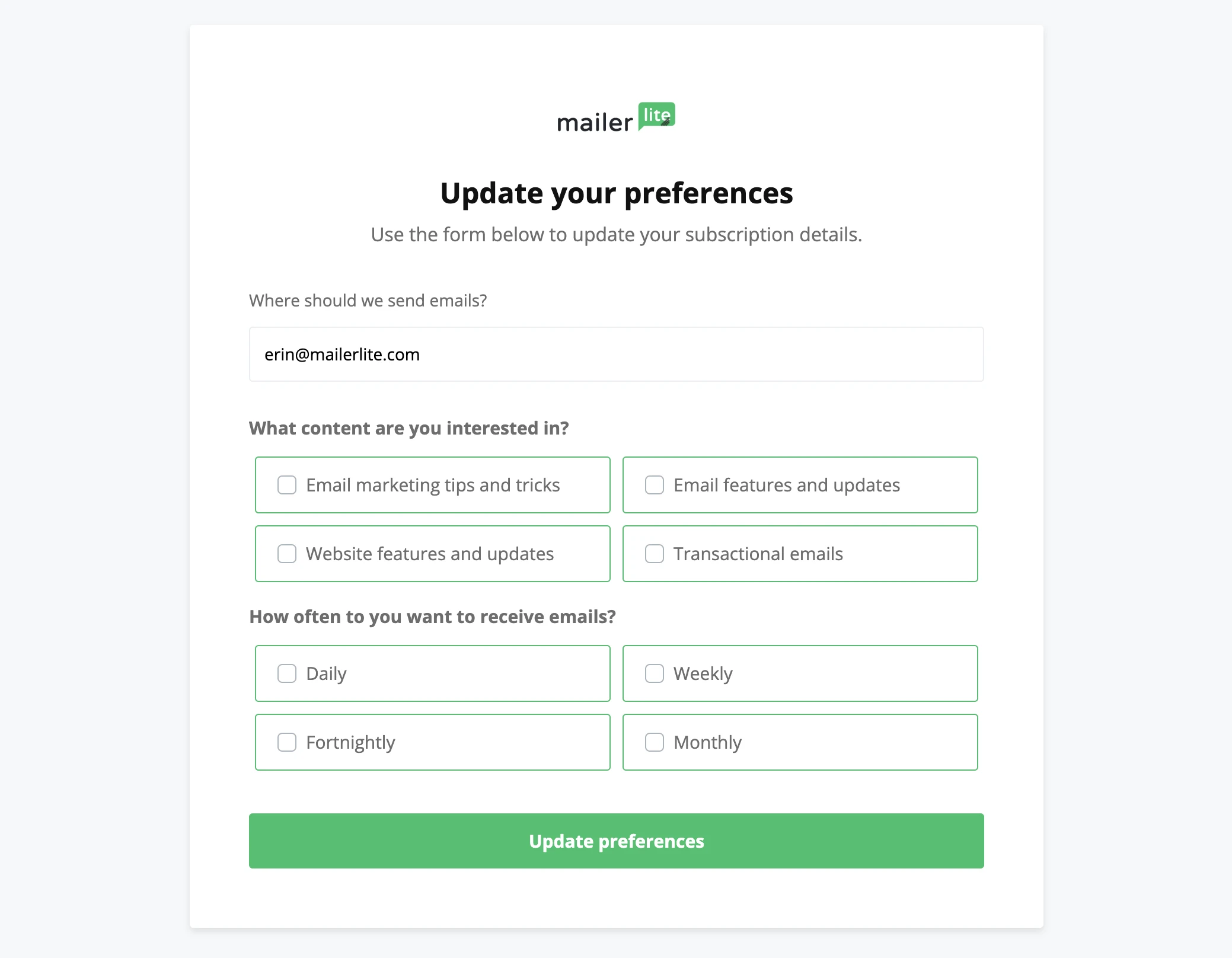
Some useful/insightful elements to include in your preference center are:
An email address field
Interests or topic preferences
Email frequency preferences
Depending on your industry, you can include more preferences that are relevant to both you and your audience. For example, if you’re a career coach, you might ask subscribers to update their employment status or include a “Job role” field.
Just remember that email preferences should be respected. If you send out a weekly newsletter and subscribers opt for monthly emails, are you prepared to create a second newsletter for monthly subscribers? Only include the preference options you’re prepared to provide.
How to set up your preference center in MailerLite
Advanced users can access the preference center editor by navigating to their Account settings and clicking Preference center.
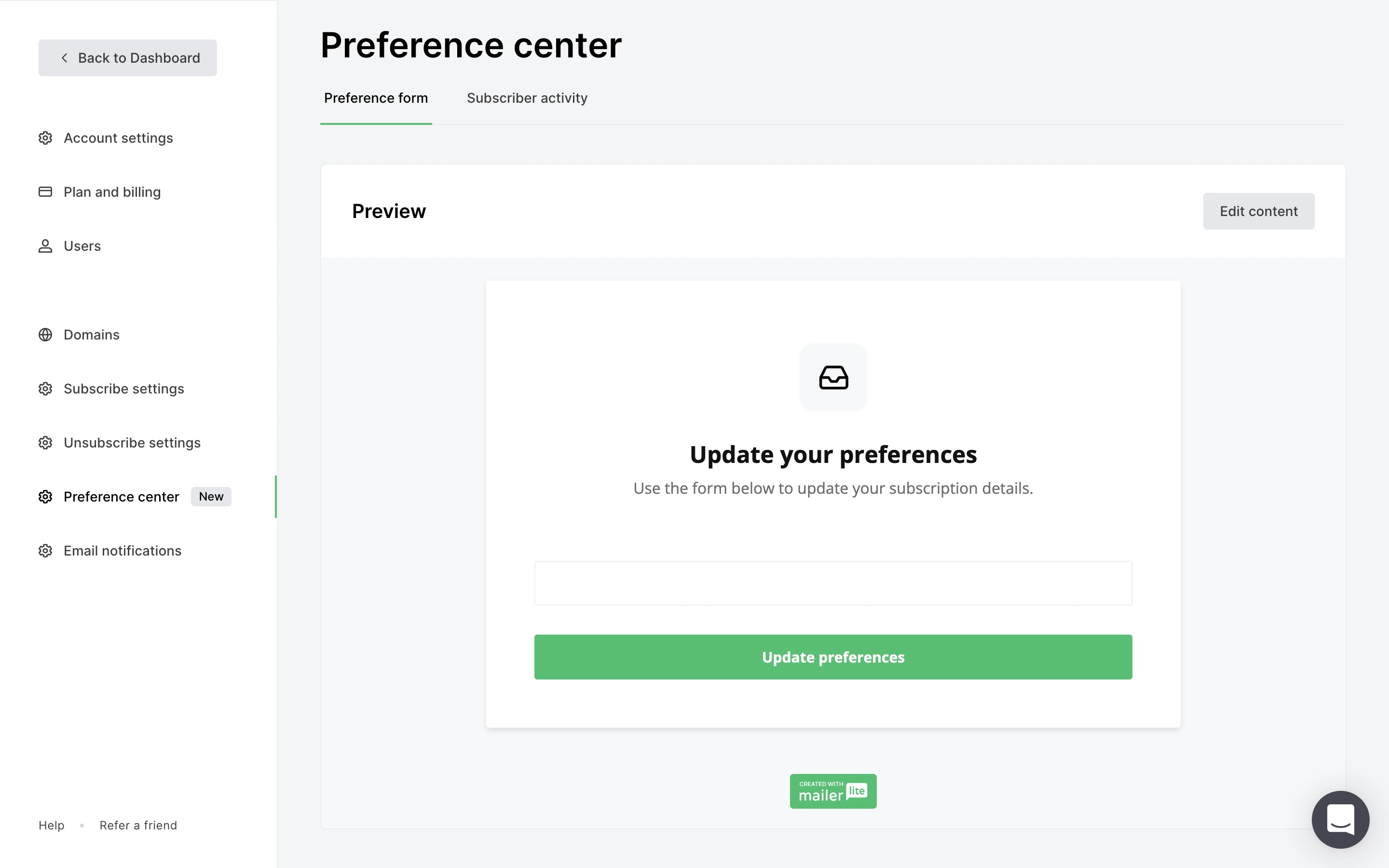
When you open the editor, you’ll find eight content blocks you can use to design and customize your preference center:
Image
Text
Image and content
Video
Social links
Divider
Spacer
Preferences
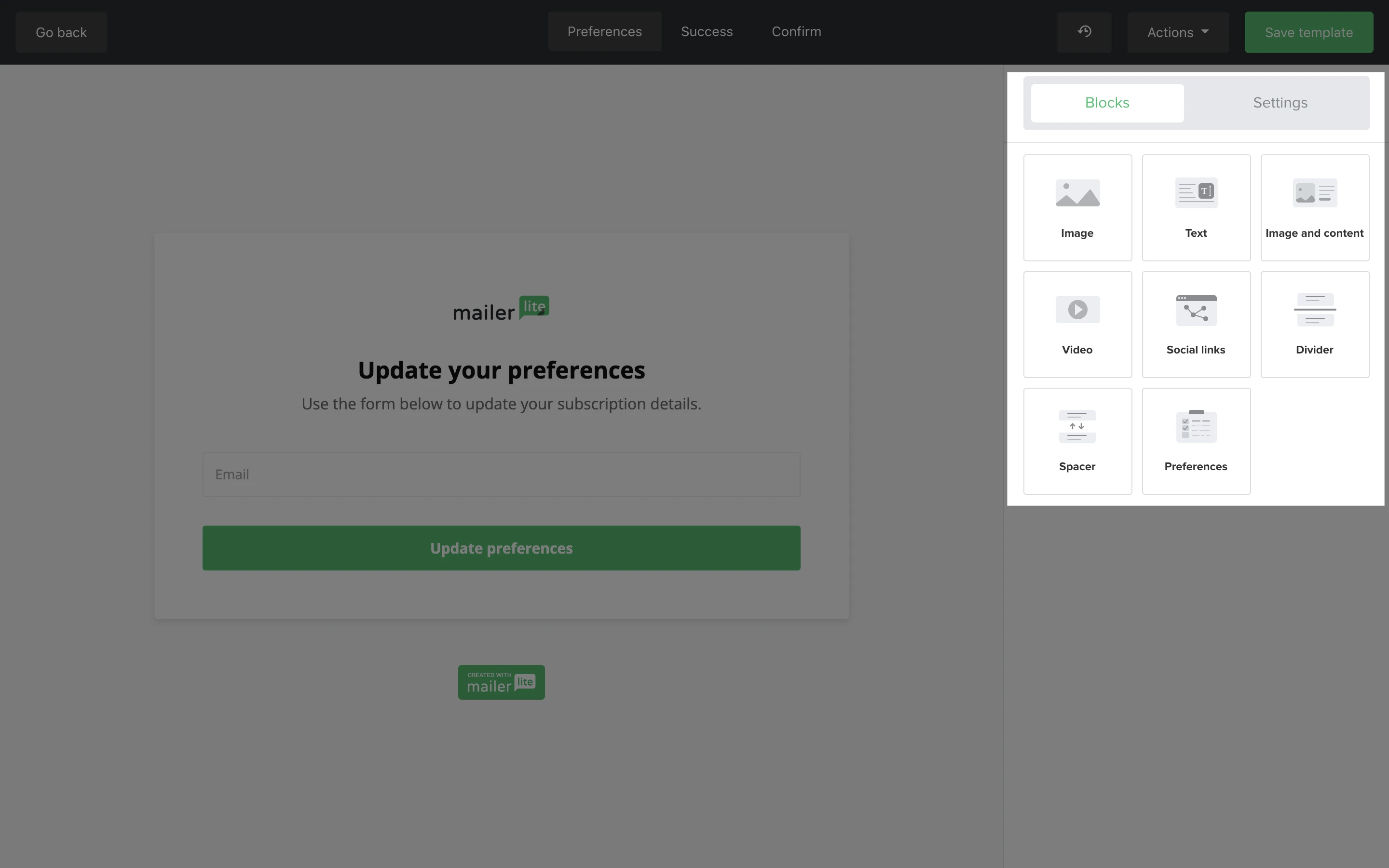
To edit and add more fields, select the existing field, then click add more fields in the sidebar. You can edit each field by clicking the pencil icon.
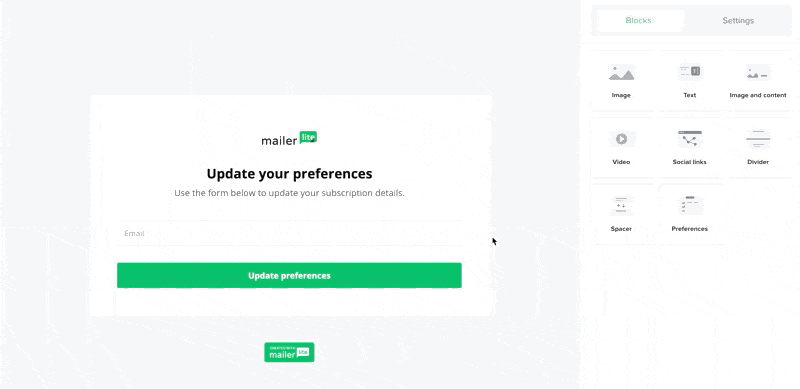
To add customizable preferences, drag and drop the Preference block into your preference center preview. Then, in the sidebar, add and edit question templates based on what preferences you want subscribers to provide.
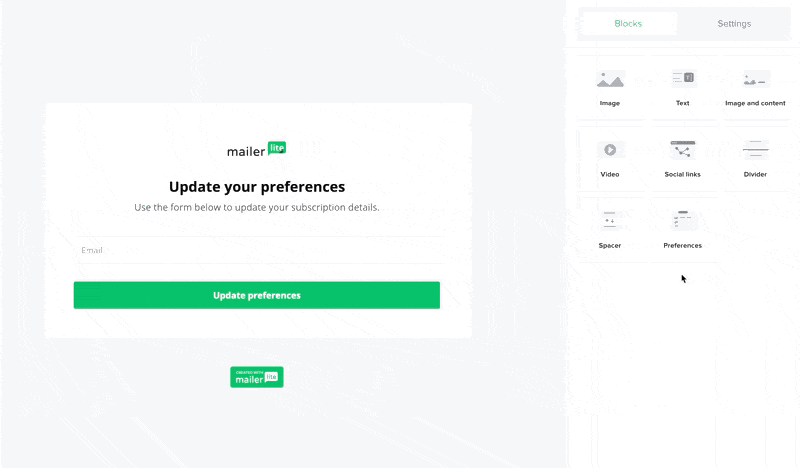
You can choose radio buttons for multiple answers, checkboxes for single answers, or a dropdown menu.
Rules must be applied to each question so that subscriber profiles are updated to include their preferences. Select the Rules tab to apply rules to each question.
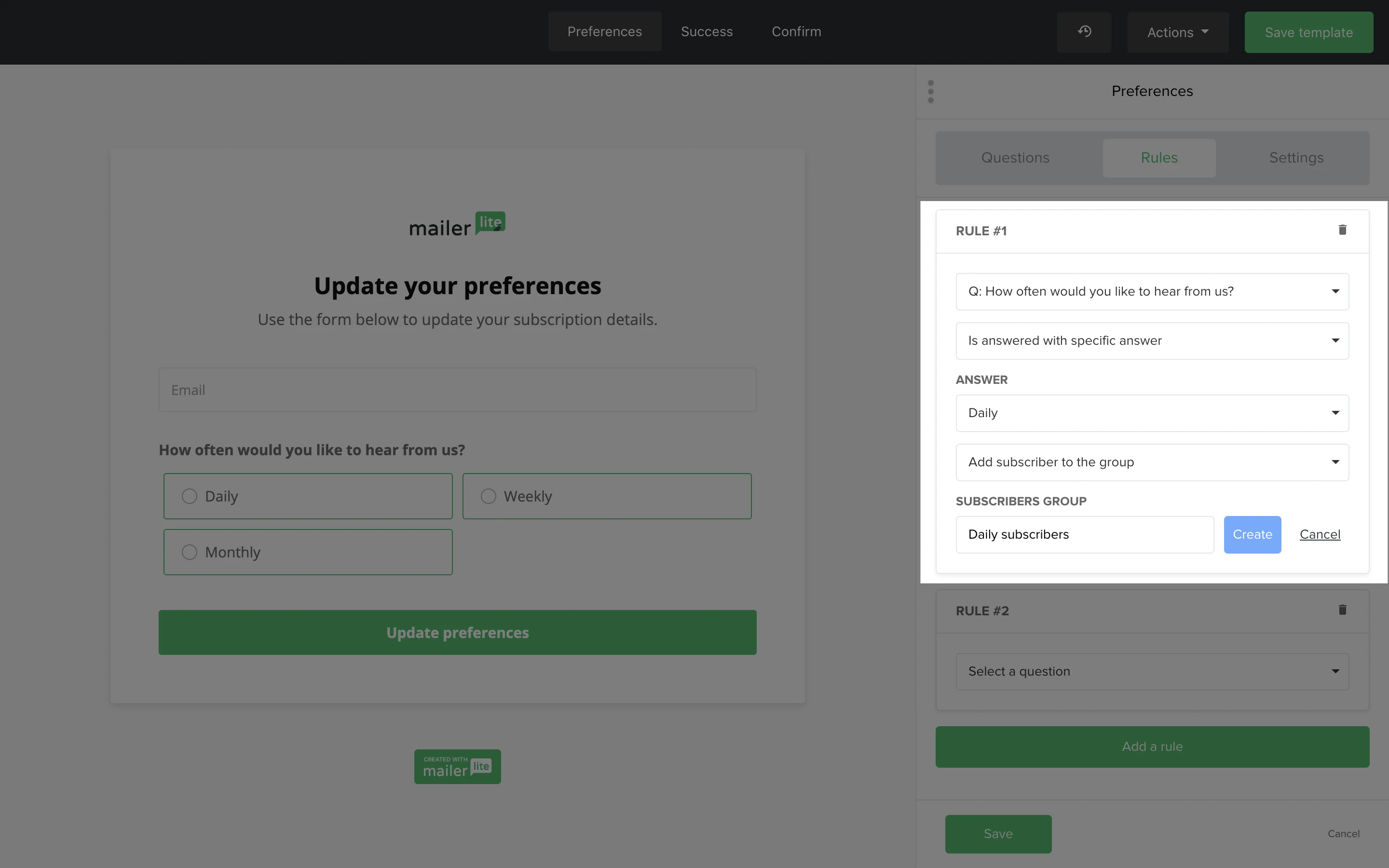
Applying rules to preference questions is what allows subscribers to self-segment based on their preferences.
Using the navigation bar you can also customize the success page as well as the confirmation page reminding subscribers to check their inboxes to confirm any email address updates.
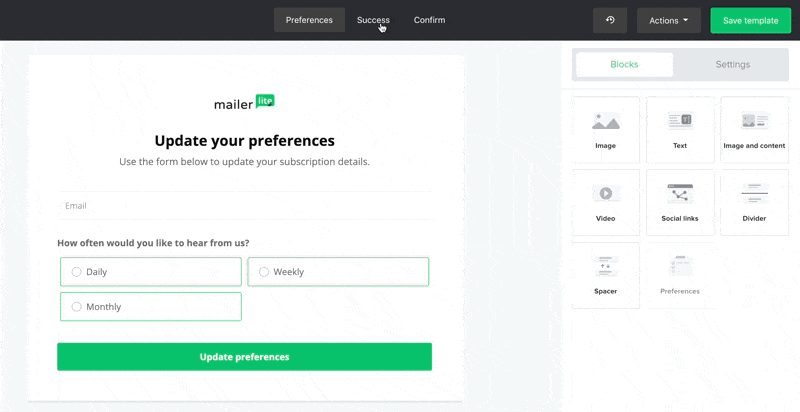
Learn more about setting up your preference center in MailerLite. →
Try it for free
Sign up for a free MailerLite account and trial more advanced features like the email preference center editor for 14 days free.
Email preference center examples
What you include in your preference center ultimately depends on your industry and your business needs. Let’s take a look at a few simple examples of how you can use an email preference center.
1. Email frequency example
A news agency could ask subscribers to subscribe to different email lists based on their preferred email frequency. In this example, the news agency asks subscribers if they want to subscribe to a daily, weekly or monthly digest.
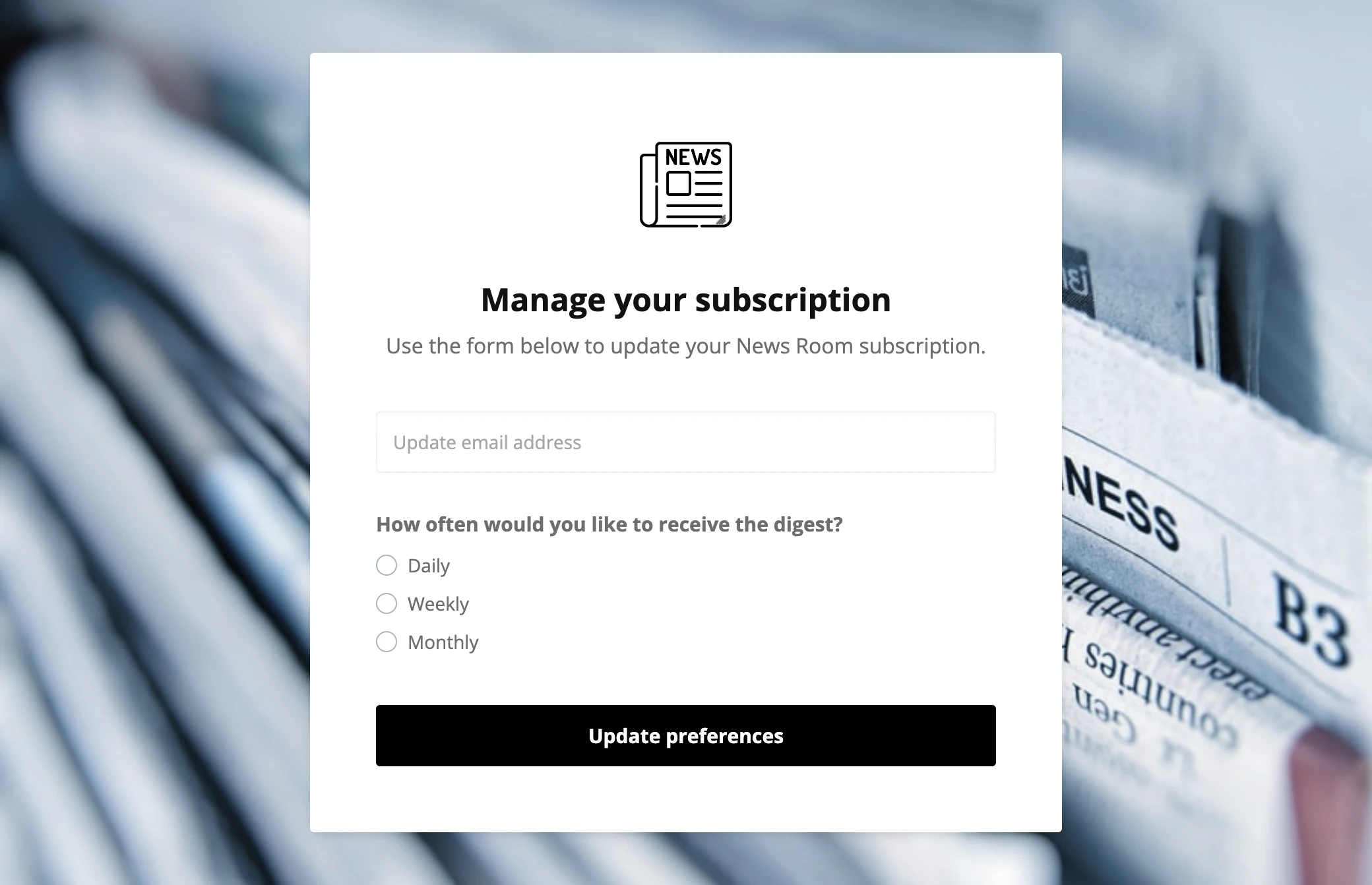
2. Content preferences example
Content preferences provide the exact data you need to send highly-targeted email newsletters. In this email preference example, an author invites subscribers to choose which topics they’re most interested in.
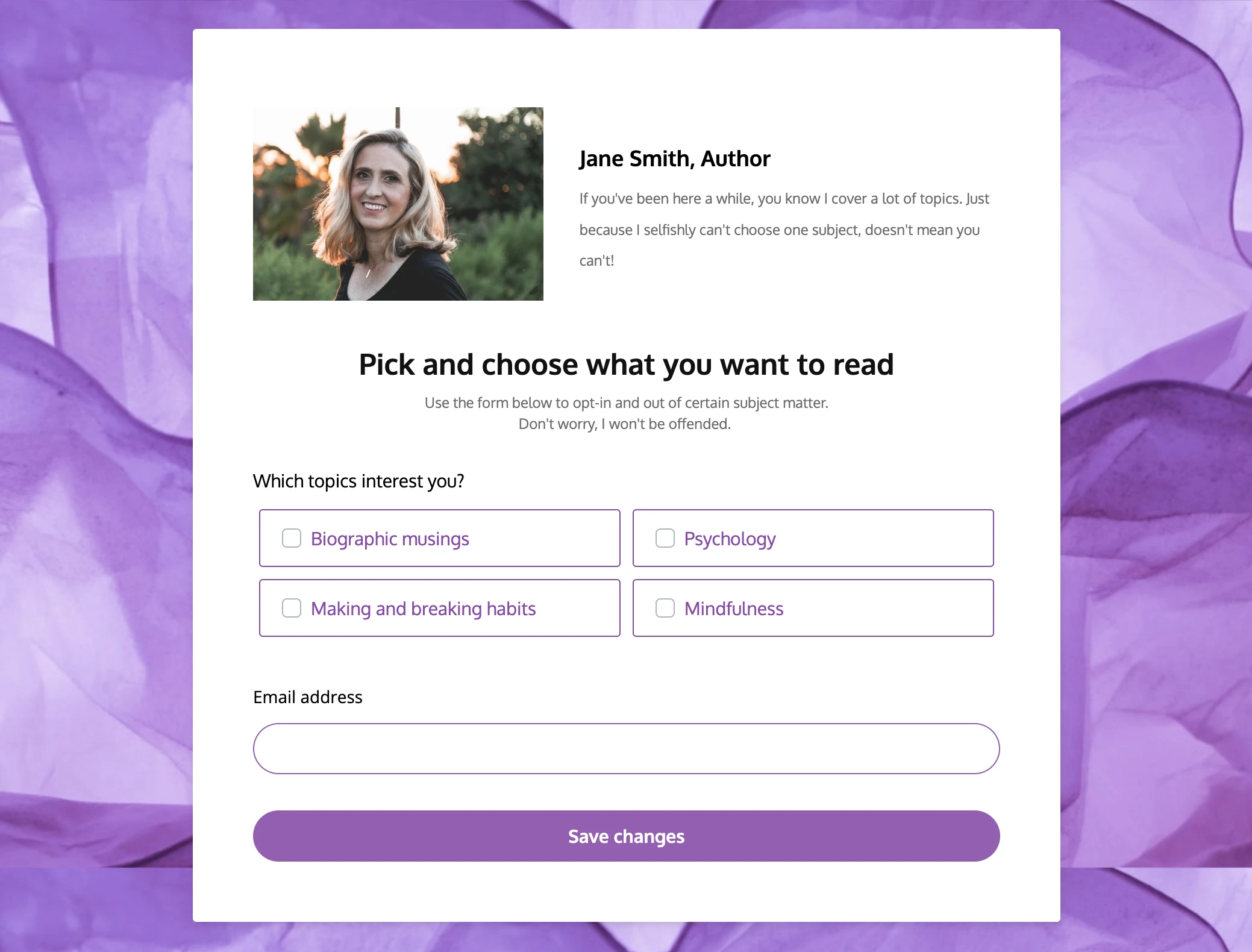
Jane Smith can use this data to break up her email list into interest groups and increase engagement.
3. Custom preferences example
Some businesses require a little more information to send the right emails to the right people. In this example, a career coach asks specific questions unique to their niche.
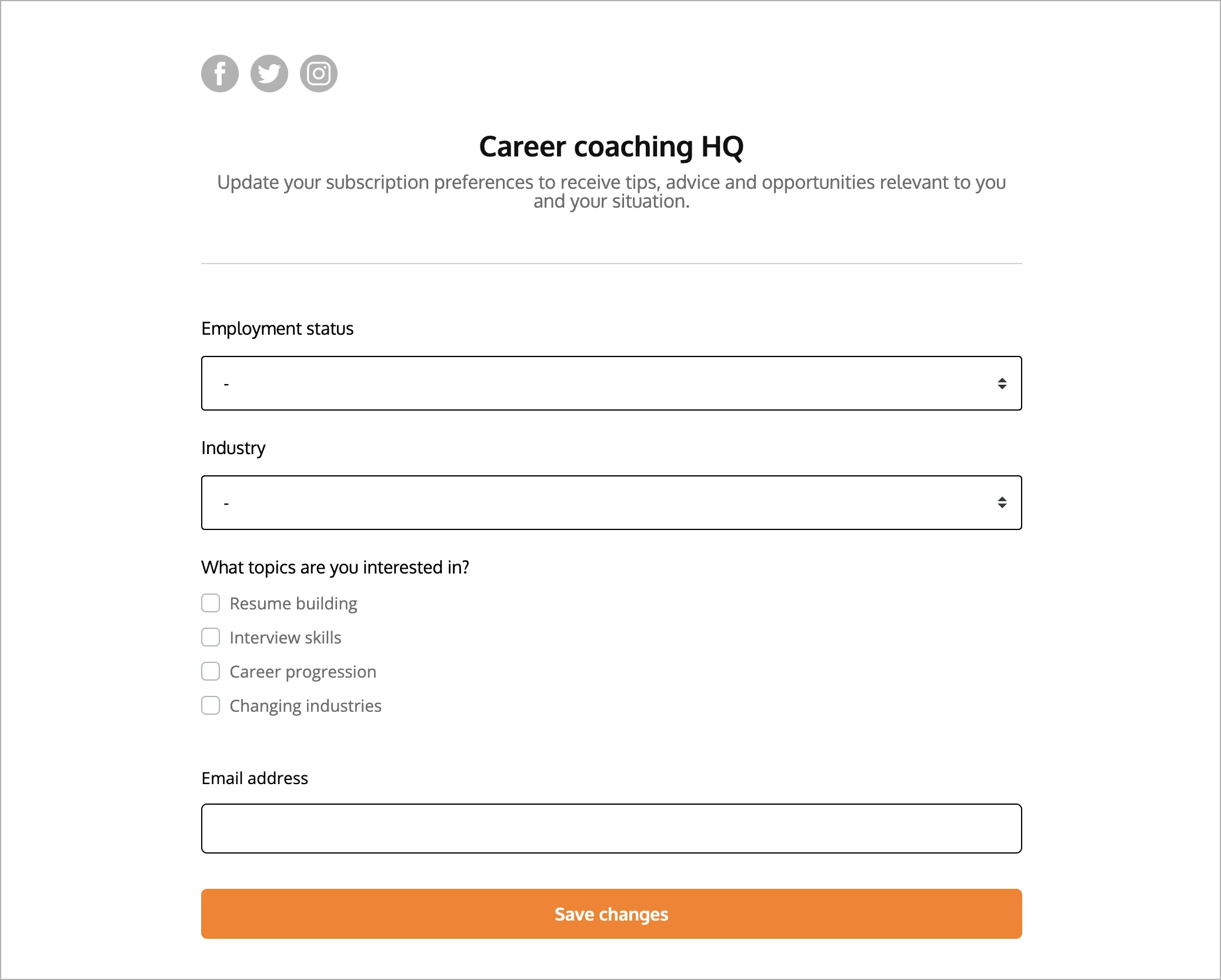
Where to add your preference center
Subscribers can only access the preference center by following a link provided by you. So it’s important that you always include this link in your newsletters. Like an unsubscribe link, a preference center link will automatically be applied to the email footers of advanced users.
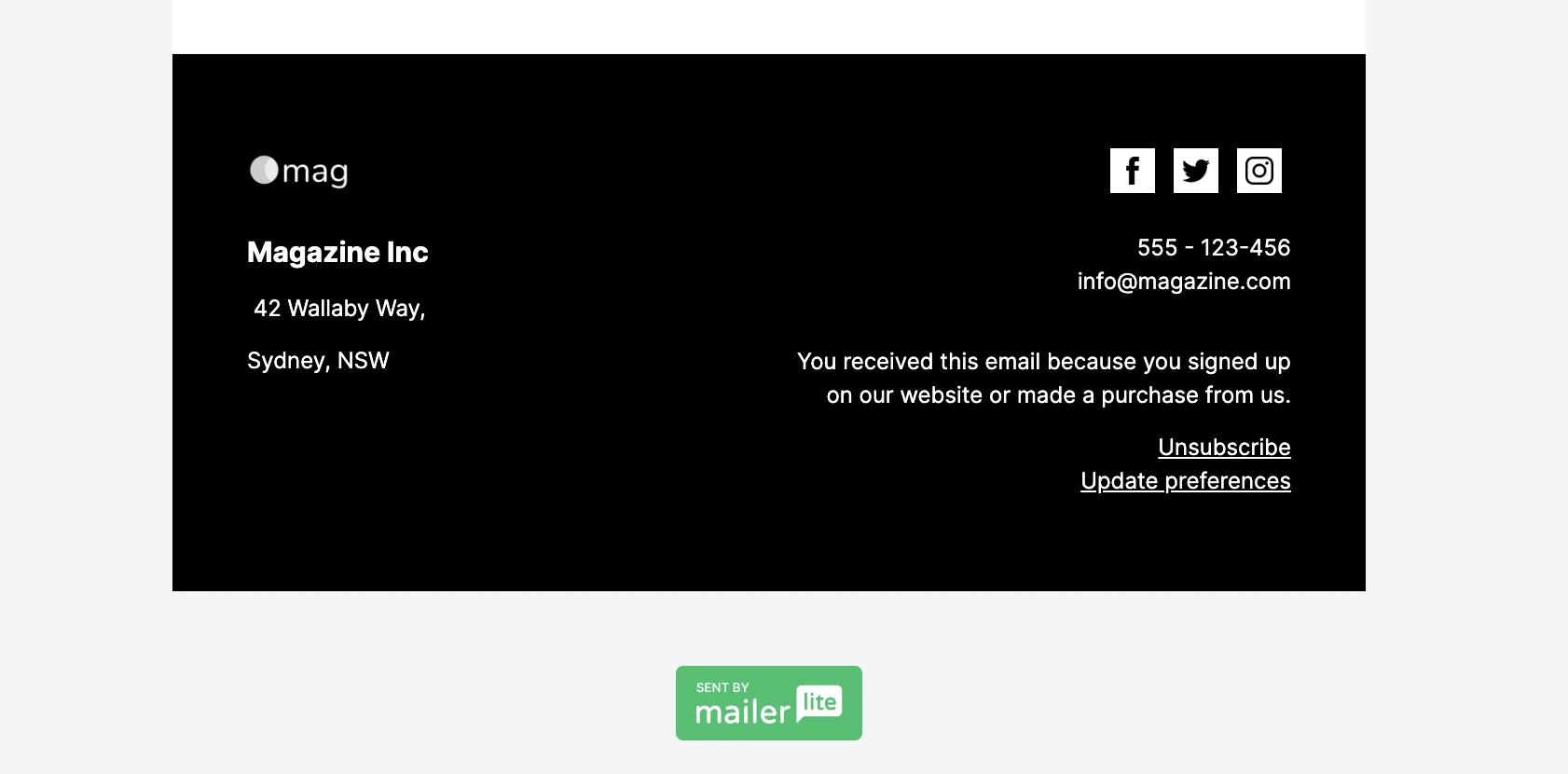
But why stop there? Subscribers usually venture to footer links when something is wrong or they’re looking to unsubscribe. You can add a link to your preference center wherever you want by adding the variable: {$preferences} to a button block, or to any text as a hyperlink.
Here are 4 strategic places to add a link to your email preference center. →
1. Welcome emails
If a subscriber is venturing down to your email footer, it’s usually because something is already wrong. They’re either looking to update their preferences because they’re not interested in the email they’re reading or they’re looking for the unsubscribe button.
You can get ahead of these issues by inviting new subscribers to update their preferences in your welcome email–before they even receive a campaign.
Take this welcome email from Chipotle for example. They encourage subscribers to set their preferences right away to receive news, offers and updates relevant to Chipotle restaurants in their city.
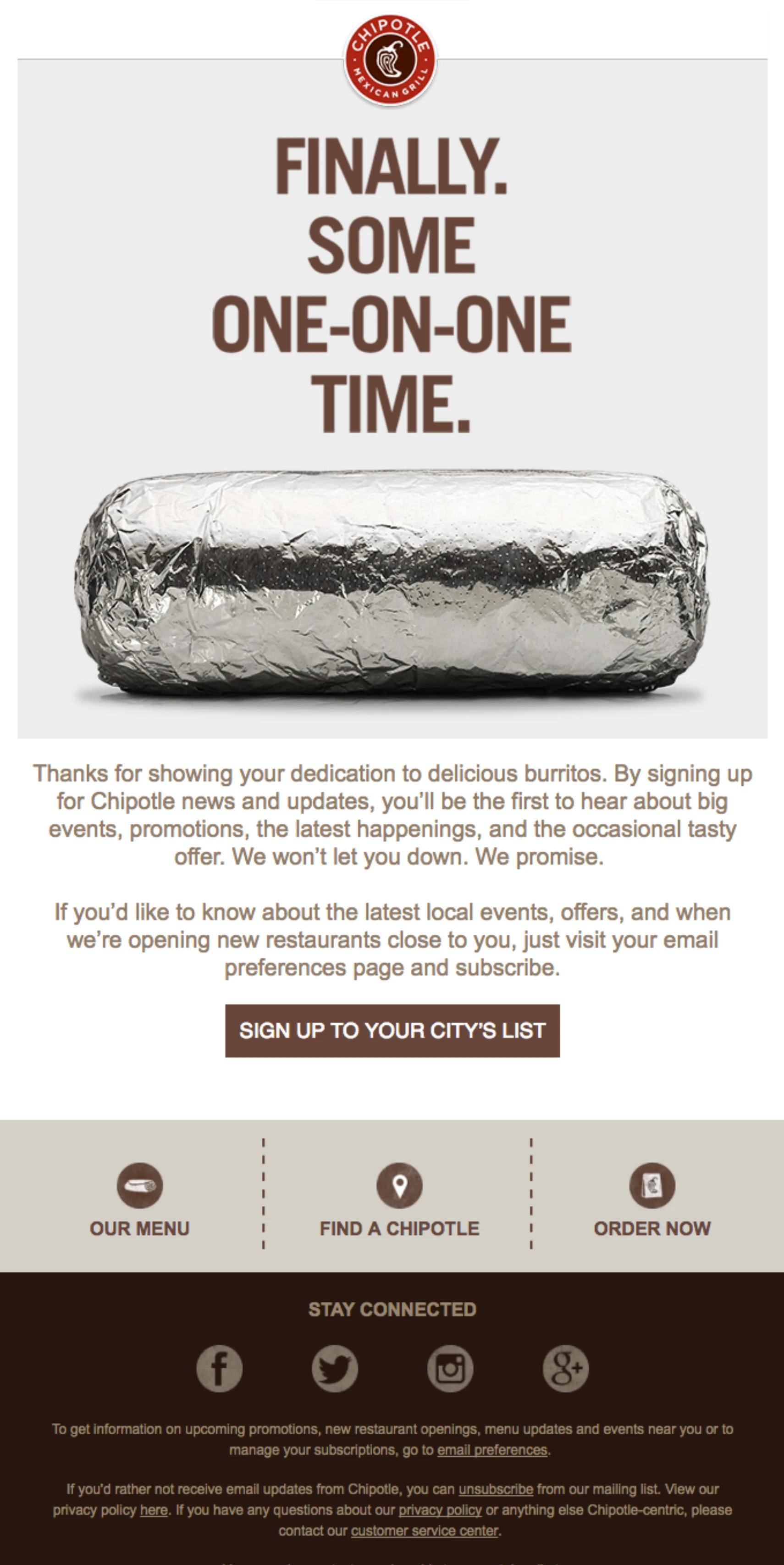
2. Product launch emails
Imagine you’re an avid hiking enthusiast, you find an outdoor sports brand that stocks amazing hiking equipment, so you sign up for their newsletter. You didn’t have an opportunity to set your preferences upon signup, so you start receiving news and updates about sports and activities that you have no interest in. Eventually, you’ll just start ignoring them.
By adding the option to manage preference in product emails, subscribers can opt-in to receive product updates on offers that they’re more engaged with.
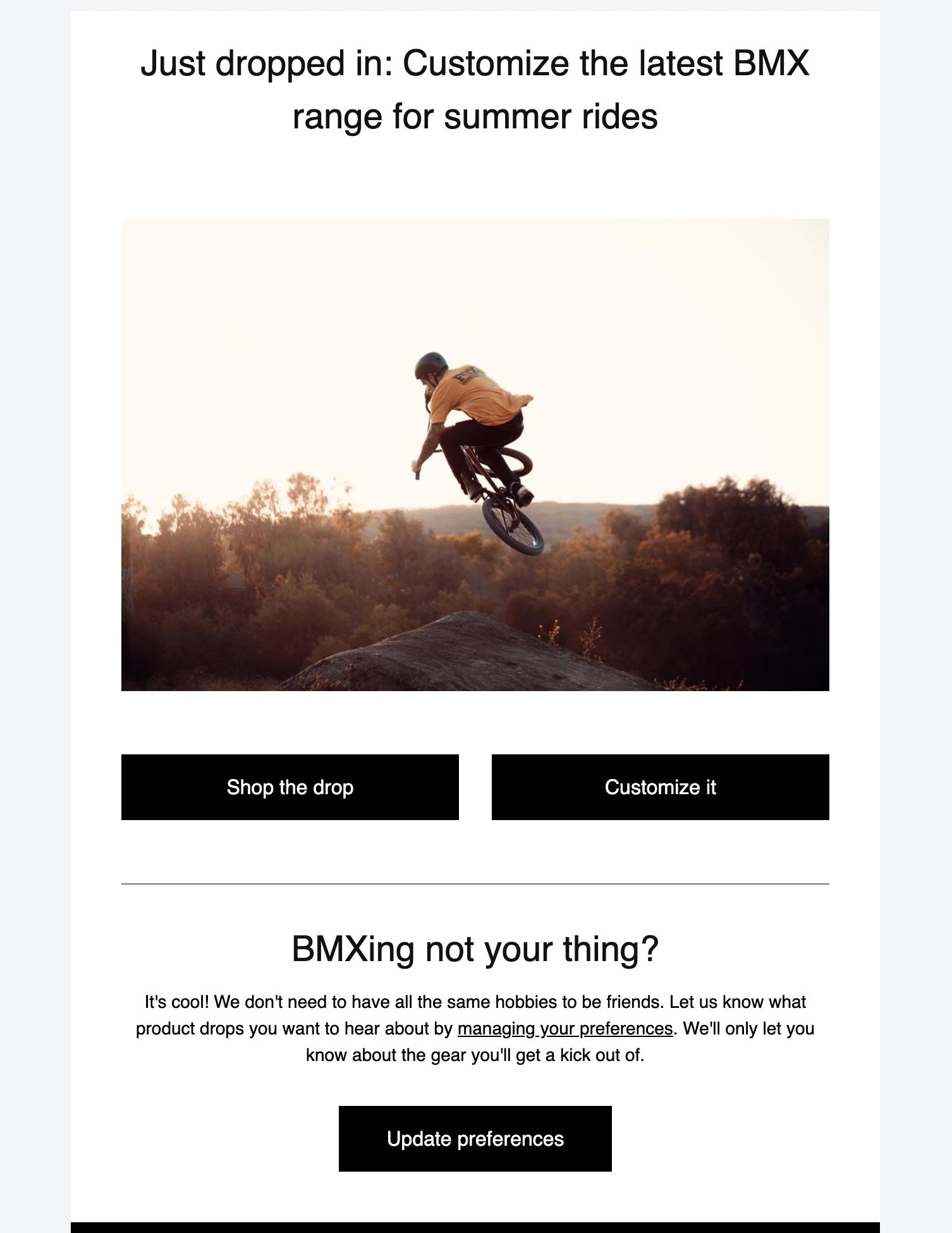
Re-engagement campaigns
A re-engagement campaign is an email marketing campaign or an email workflow with the aim of bringing back inactive subscribers, boosting email engagement, and increasing subscriber retention.
It’s also the perfect time to invite subscribers to opt-in to emails that they’d be more inclined to open and engage with.
Zapier does a great job of incorporating preference management in their re-engagement campaign.
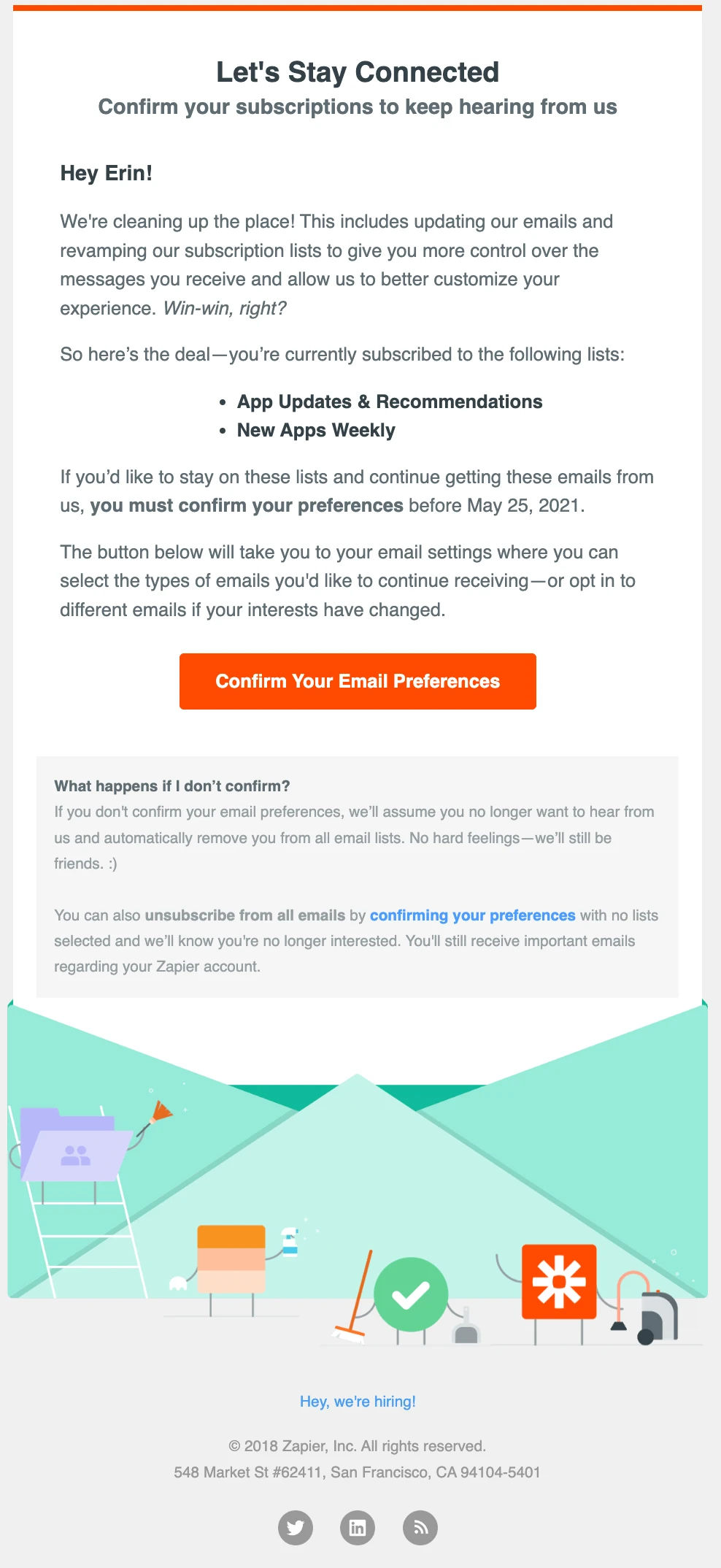
4. Anniversary of subscription emails
Sending an automated message to subscribers on the anniversary of their subscription is an easy way to add a personal touch to your email marketing efforts. It’s also the perfect opportunity to invite subscribers to update their preferences.
Adding the option to update email preferences in your anniversary email allows you to continue providing a tailored experience to your email list for another year.

Email preference center best practices
Preference centers should be personal to your brand, it should feel like an extension of your email marketing campaigns. With that being said, there are five best practices that everyone can follow when creating an email preference center.
It may seem obvious, but you should keep the process straightforward if you want subscribers to voice their preferences. There should be a link to your preference center in every email. If it’s hidden in the middle of a paragraph made up of microscopic text, your subscribers won’t see it.
Make the call-to-action (CTA) clear, so that subscribers know what they get when they click it. It could be as simple as “update preference” or something with a little more flavor that suits your brand voice.
Automation is your best friend when it comes to personalization. So take advantage of it!
Set up a workflow that invites subscribers to update their preferences every so often. Not too often though, we’ve already established too many emails can push people away. So keep your preference update emails at least 6-12 months apart.
You might think this is common sense, but it’s important to set up your email preference center to organize subscribers based on their wishes. Then you can create segments for certain subject matter, email frequency, etc, and choose the relevant segments when selecting newsletter recipients.
If a subscriber updates their preferences and then continues to receive irrelevant emails you might as well kiss that subscriber goodbye.
We like to keep things simple, and that rule definitely applies to email preference centers. If your preference center is loaded with multiple fields and questions, it creates too many obstacles for your subscribers.
It shouldn’t feel like a questionnaire, only ask questions that are relevant to your business and your email marketing strategy. Avoid unnecessary questions or the need to scroll.
When asking subscribers what content they’re interested in hearing about, make sure you only include the type of email content you intend to create. If a subscriber opts into an interest group, then doesn’t receive any emails on that topic, they’re going to be disappointed.
Be realistic when offering different content topics, and always keep it relevant to your core business.
Chocolate or vanilla?
You can offer genuine, personalized messaging that any subscriber truly wants to receive by creating and implementing an email preference center. You'll be rewarded with more engagement and happier customers!
